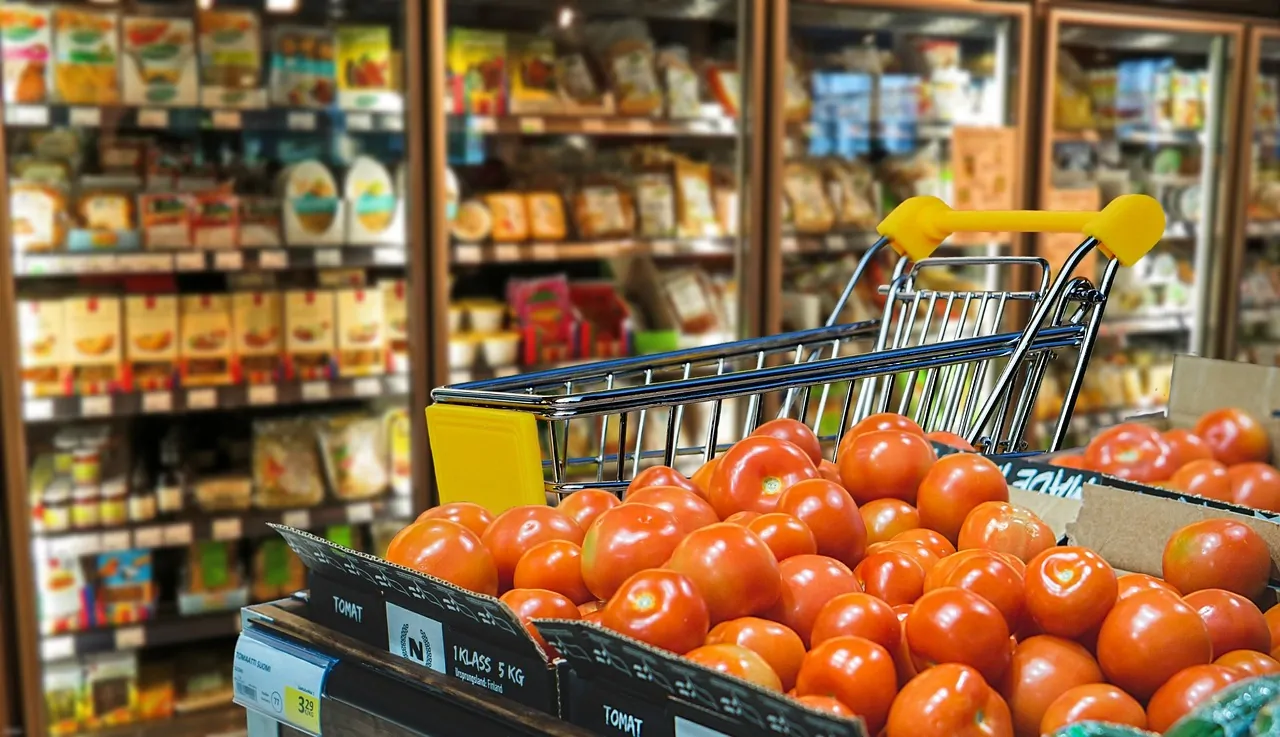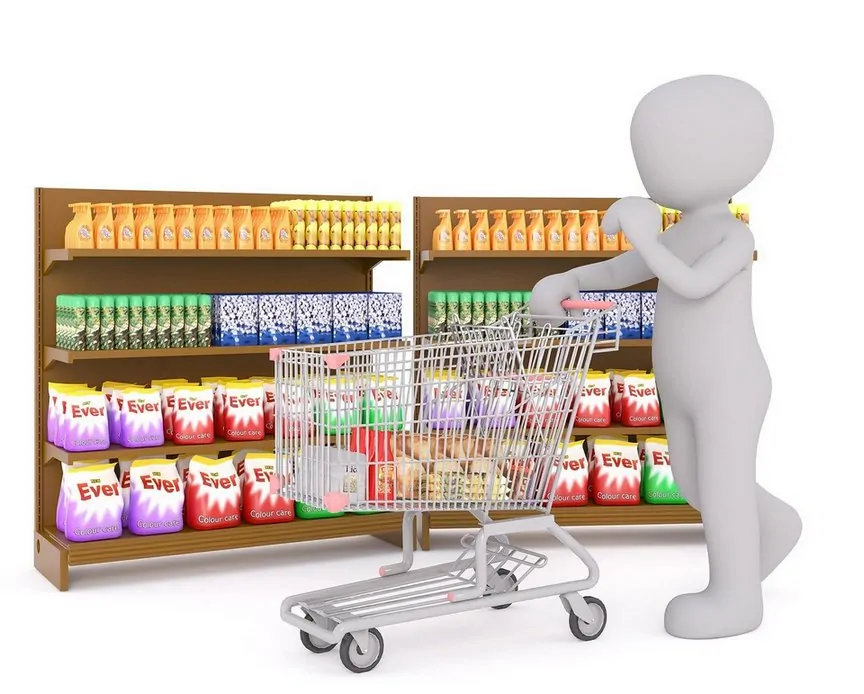
Shopping is an integral part of our daily lives, but the decisions we make while shopping can have a significant impact on the environment. Even small changes in how we shop can help reduce our ecological footprint and promote sustainable practices. In this post, we will explore some basic rules for sustainable shopping that can help reduce resource consumption, waste, and environmental pollution while supporting sustainable products. By making conscious choices about what, where, and how we purchase, we can play a crucial role in protecting the environment and nature—not just on a global scale but also locally.
Before You Go Shopping

Behind every product, whether it’s labeled as “eco-friendly” or traditionally produced with little regard for the environment, there is raw material extraction, energy consumption for manufacturing, transportation, manipulation and storage. All of this involves energy consumption, and often also pollution or other forms of land degradation. So, regardless of how “eco-friendly” something seems, the amount truly matters.
Before heading out for shopping, it’s good to mentally evaluate:
1. Do You really need this? If yes, do You really need this much?
It’s no secret that, under the influence of advertising, we often consciously and unconsciously get tempted to buy things we don’t really need or don’t need yet. Wouldn’t it be great to have the latest smartphone model with a few more megapixels for photos? Or new shoes because my colleague bought a new pair last week? What about a new laptop after seeing the ad for the latest model? And how about that delicious tuna spread I’ve never tried before, it looked irresistible in the commercial… Or maybe just a few extra chocolates and one more pack of cola?
Overconsumption and waste in our consumer society have already been well documented. Take a look at some thought-provoking analyses here or here. Think about whether what you already have might suffice or if borrowing or sharing might be a better option.
2. Where Will You Shop?
Of course, sometimes you simply have no choice: there’s only one store nearby, it’s the only shopping center You can get to on my way home from work, You don’t have enough time to visit multiple shops, or your financial limitations force me to buy where it’s the cheapest…
But sometimes, we do have a choice—and let’s be honest, how often is it more about convenience than real constraints?
How about trying a new store that offers products more aligned with your lifestyle change?
Don’t have anything like that nearby or know of any options? No worries, it’s the 21st century, the internet age—try searching online, talking to like-minded friends, or at least explore suitable e-commerce platforms.
For both options, it’s usually less convenient and takes more time than a big supermarket with a vast selection of everything under one roof and all those tempting discount offers… But it may offer fewer products, but possibly higher-quality ones, maybe locally produced items, or perhaps even more eco-friendly products. And maybe it will even be a little more expensive… or maybe not.
From personal experience, we highly recommend this approach. We started years ago with a shop selling organic products. A year later, we added shopping for fruits and vegetables from a local market, then began seeking local farmers and purchasing some of our groceries directly from them. Gradually, more and more of the food in our household came from these alternative sources. While we still shop at supermarkets, it’s mostly just for what we can’t find elsewhere. It’s been a gradual process of discovering new options, and it’s still ongoing.
Now You’re at the Store – Let’s Shop

Regardless of whether you end up in a large shopping center, a smaller local shop, or shopping online, there are several universal principles you can follow:
3. Let’s take a look at where the product is from and how far it has traveled.
Distance matters. There are several reasons for this; let’s focus on the transportation factor. And transportation often involves fossil fuels or other energy consumption, along with other negative environmental impacts. So, if you can find a product from a shorter distance, ideally local or at least from your broader region, which meets your needs just as well, prioritize it. Meat or dairy from a farm outside the city, although maybe a bit more expensive or less attractively packaged, can taste just as good as the one that traveled thousands of miles but is cheaper or has better advertising. Likewise, coffee from a roastery in a neighboring city can smell just as fragrant as that from a well-known brand. And how about vegetables from a local farm, or at least from a farm in your region? Yes, it may not look as colorful, it may not be as clean, and its packaging may not be as neat, but it could taste just as good or even better than the one that was transported by truck across the continent. And as a bonus, you’ll feel good knowing you supported local farmers and the local economy.
4. Opt for Environmentally (or Ethically) Better Alternatives
If you don’t have the time, energy, enthusiasm, or endurance to investigate what’s behind a particular product or manufacturer, don’t give up. Someone else has already done that for you. Look for products with eco-friendly or ethical certifications. Although these products are usually a bit more expensive, the price difference may not be significant. But be cautious of so-called greenwashing—misleading labeling of a product with a “pseudo-green” brand. This could be a topic for a separate post. For now, it’s enough to focus on verified labels.
If you have the interest, time, enthusiasm, and resources, you can even play detective and investigate what social and ecological practices the manufacturer follows, read reviews, ratings, discussions, or even ask questions. Sometimes, you’ll find that even products without eco-certifications can be produced with a significantly lower negative impact on our planet (and our health). An eco-certification is not the only criterion; it’s just an aid.
And then, there’s a possibly even more enjoyable option: Try chatting with a local producer, learn their views, ask about the methods they use to raise animals, grow vegetables, or produce their goods. Talk to them about the challenges and joys they face in their work. You might make new friends and learn more about the quality of their products. From our experience, we highly recommend this approach. It’s completely different to shop for food in an anonymous crowd at a supermarket than to shop in a small local store with mostly regional products, where you already know the owner and the salespeople, and you can exchange a few friendly words. Even better is going to buy food directly at the farm—turning it into a nice family experience.
5. Check the Packaging, or Try Zero Waste Shopping
A typical scene: A pack of delicious cookies in an attractive plastic wrapper, each cookie in its own neat plastic bag, and those ten pieces packed in another nice plastic wrapper. How about this ripe pineapple? Let’s wrap it neatly in a plastic bag, after all, that’s how people usually pack all fruits and vegetables, right? And these cucumbers for the salad—also wrapped in plastic wrap… Actually, let’s grab three of them; one won’t be enough. And finally, these new headphones for the smartphone—they’re on sale and come in a big box with a clear plastic window so I can see them. Of course, they’ll be safely packed in styrofoam packaging to look professional and high-quality. Then, we carry the whole shopping in a disposable plastic bag…
Once we get home and unpack everything, let’s compare the amount of product to the amount of packaging, mostly plastic, that ends up as waste. Was all this packaging really necessary? Yes, most products need some kind of packaging, but not everything needs to be in multiple layers, not every packaging has to be problematic plastic, and not every package needs to be so large compared to the product itself. Of course, you can’t control how the manufacturer packages it. That’s true. But there are manufacturers who try to package products more efficiently or use less problematic materials—like paper instead of plastic, wooden shavings instead of styrofoam or bubble wrap, or at least biodegradable plastic packaging.
And then there’s the other side of the problem—the part you have direct control over. Do You really need to put all my fruit and vegetables in plastic bags? Even those that won’t easily crush during transportation, or that are large enough and won’t spill? And if You really have to pack fruit or vegetables, which is true for some types, does it always have to be a new plastic bag? How about bringing your own bag and reusing it until it breaks, and then throwing it away? Or using fabric bags, or even wrapping them in paper?
What about trying to shop at zero waste shops, where you can bring your own containers and only pay for what you take? The number of stores offering bulk products where you can refill your own containers with cleaning products or scoop rice, sugar, flour, etc., is constantly growing. And when you use a reusable container, packaging waste is practically nonexistent.
6. Think About What Happens to the Item After It Reaches the End of Its Life
Nothing lasts forever; maybe a few things last a lifetime, but most items will eventually wear out after weeks, months, or years of use. What was once a useful item will suddenly become something you need to get rid of. Most of the time, it ends up as waste. But will it be waste that can be recycled, reused? Or will it be compostable? Or will it become non-recyclable, potentially even hazardous waste?
Take a moment to think about the amount of waste produced by everyday items you use regularly or occasionally—from toothbrushes, clothes, and electronics to furniture, carpets, textiles, and sports equipment. Have you thought about what will happen to your old carpet, curtains, or bookshelf when you move or reorganize your apartment? What about the old mattress when you replace it with a new one? What will happen to worn or damaged clothes?
You’ll find that it’s extremely important what these items are made of, and how the materials are combined—whether they can easily be separated. In other words, how likely is it that the discarded item becomes non-reusable waste or a secondary raw material?
The Main Point

By adopting these simple but effective steps, we can contribute to making our daily habits have a smaller environmental impact. Improving the way we shop doesn’t necessarily have to involve drastic changes in our lives, but every small step can contribute to a larger goal of helping conserve natural resources, reducing waste, and supporting sustainable businesses.
All of these choices, while they might seem small at first glance, have a significant impact on our planet and can also create positive changes in our communities. Sustainable shopping is not just a responsibility but also an opportunity to contribute to a better world—for us and future generations.
Change can start with our daily decisions, and with small steps, we can gradually create a larger and lasting impact on our planet. Don’t be fooled by the thought that your decisions and behavior don’t matter. Remember, as consumers, you have the power and influence to shape the way manufacturers behave with the products they sell.
We’ll be happy to guide and support you along the way, so stay tuned!
